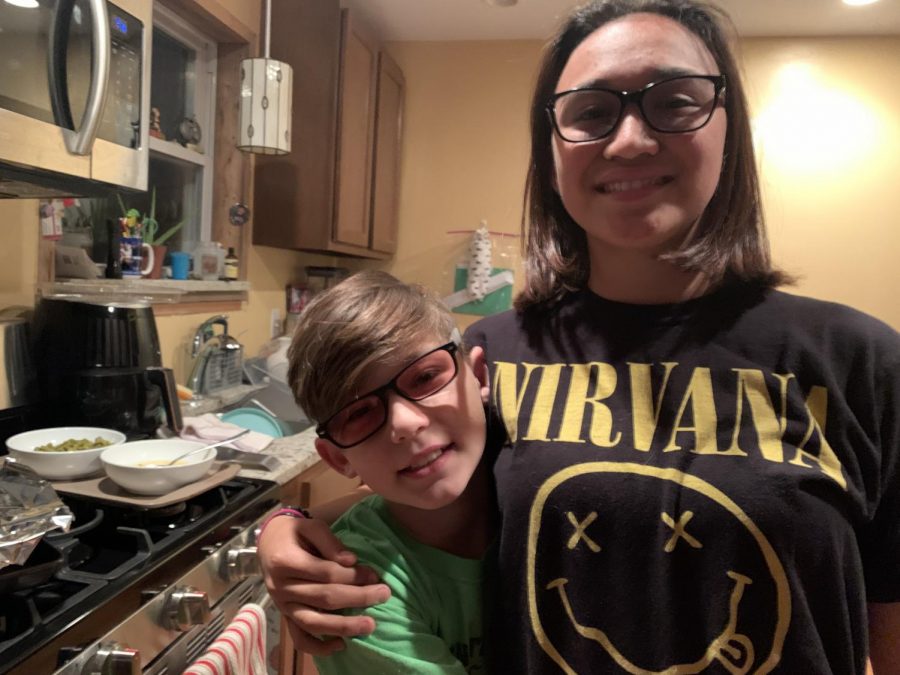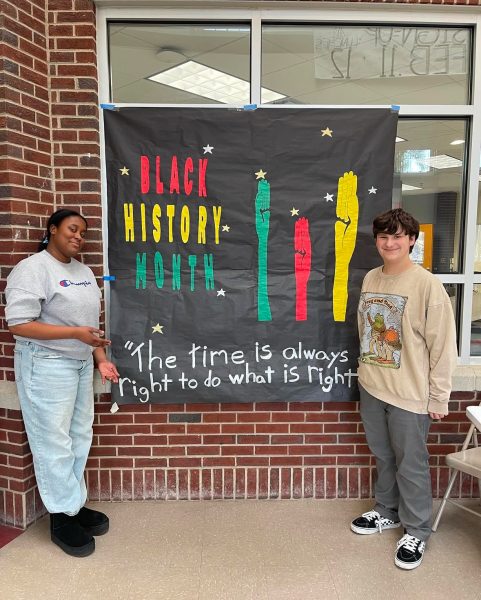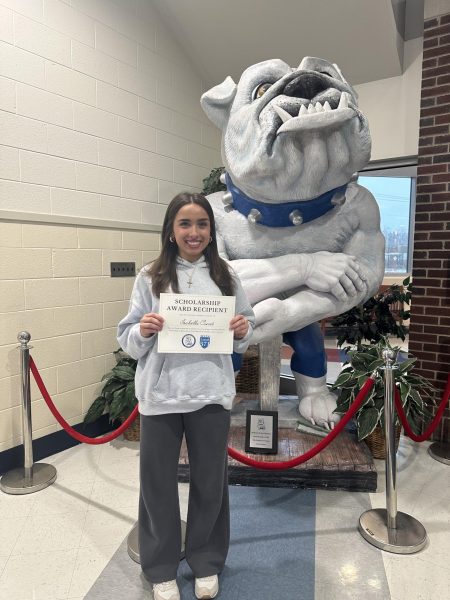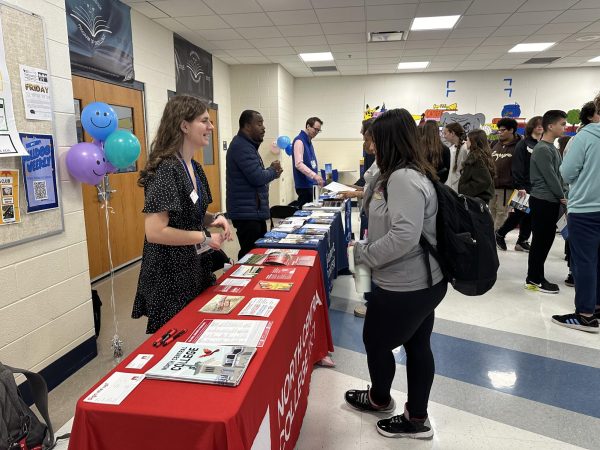My Life: Irlen Syndrome
Photo courtesy of Jim Gahagan.
Hannah Sales (right) with her cousin Seamus Gahagan (left), who both share Irlen Syndrome.
How hard do you think it would be for you in school if when you read the words moved around on you, if you couldn’t focus, or if you always had a headache? What if bright lights bothered you, or within a couple of minutes the work you were doing completely drained you and made you exhausted?
This is how I spent most of my educational life. I spent preschool through most of my sophomore year wondering why school was so difficult. Finally, in an “aha!” moment, my grandma, who is also an educator, said:
“I wonder if all your symptoms come from Irlen syndrome?”
I had no idea what Irlen Syndrome was until she told me and she described it to me like an allergy to light in my brain. I wasn’t sure what that meant, so I did some research. I found that Irlen Syndrome is a genetic disorder where the brain has difficulty processing certain wavelengths of light.
So, in other words, my brain only works with certain colors, these are explained later.
On the Irlen website, they have a short quiz you can take which will tell you if you possibly have Irlen syndrome https://irlen.com/get-tested/ . I was really hopeful that this could be the reason that I struggled with classwork. I took the test and passed with flying colors. I told my mom that we should schedule an appointment to get me professionally tested. We found out that there is only one person in the state of Illinois certified to be able to perform the test. No wonder nobody knows about this! Every year, my mom would ask at parent-teacher conferences what my symptoms could mean, but the teachers could never pinpoint a specific reason. Most educators don’t even know about Irlen Syndrome, including my counselors.
The lady who tested me was Pam Krasinski, a school psychologist and Irlen diagnostician since 2013. Thank goodness she was only in Aurora and not somewhere really far away. We set up an appointment for a Saturday and went out to Aurora. The testing was about an hour and a half. The first thing she had me do was read out loud with the lights on and I felt very uncomfortable. I was not confident when I was reading and my sentences were choppy. Next, she had me read with the lights off and this was a completely different experience. I could read full sentences, I was a bit more confident, and they weren’t as choppy.
Her next task was to count small boxes that were close together, almost creating a pattern. The white paper behind the black boxes hurt my eyes, I felt like I was blinded. I then began to see halos around the boxes, along with seeing rivers between them and few of them were floating off the page. These things made it very difficult to focus and count. She then gave me overlays, which are colored transparent sheets of plastic that you can put over books or text to be able to filter out specific colors. She tested me with a bunch of different colors: shades of red, orange, yellow, green, blue, purple, pink, and grey. After all that work, the best color for me was yellow. Then, she tested all the colors again on top of my yellow. I found that two colors yellow and goldenrod (a darker yellow) worked to get rid of my symptoms.
I then realized that my favorite highlighter color to use was yellow.
I was already treating myself for Irlen Syndrome and I didn’t know it.
My reading was so much better with the Irlen overlays. I was able to read and felt very confident with these. We finished the appointment with her giving me the colored overlays that worked best for me. She was going to email us a copy of my results and the accommodations that should be made for me at school. We then set up an appointment to come back and get a special pair of glasses made.
On the way home, we started thinking of the different ways Irlen had affected my life. When I was four years old, I was tested and admitted to a gifted center for the Chicago public schools. No one really knew that I would have such a hard time in school, as I had been accepted to a gifted program. Some of my first symptoms was constant headaches, starting in preschool. I also had such a problem with sitting still (and I sometimes still do) that it really interfered with my work. My brain was too busy to focus because it was being overloaded by the light. This affected my homework tremendously. It would take me an hour or two to get me to settle down and start my homework in addition to another four to five hours to complete it. All the while, my mom had to tell me to come to sit back down and focus.
By the time I was in fifth grade, my reading was so poor that I had an unofficial IEP (Individualized Educational Plan) meeting. My teacher’s counselor and my mom put together a list of things that would help me in the classroom. Some of the suggestions were having a reading partner, low levels of noise, headphones or a separate place for testing, half the amount of problems on homework, and more time allowed for testing. Taking tests was always very difficult for me. I usually get great grades; however, on tests, I would never do so well. Because of the stress of the test and the stress of the light, my brain could not work properly. These adjustments definitely helped and positively affected my grades after.
Things were great when I graduated middle school, as the unofficial IEP didn’t follow me into high school. I had figured out how to survive with my symptoms. I found my yellow highlighter. I had my mom or YouTube read me things I needed to know. I would do my homework in dimmer spaces.
Another way Irlen Syndrome affected me was when I would go shopping. Shopping was a stressful environment for me, as my brain was overwhelmed by the bright fluorescent lights. I would have meltdowns, in tears fighting with my mom about clothes.
There were several other very important things that were affected because of my Irlen’s. I had pretty bad car sickness. I couldn’t read in the car or even look at my phone for too long either. I have to only look out the front windshield because looking out the side windows makes me dizzy and sick. I can only look at computer screens for a short period of time as well.
I have sensitivity to fluorescent lights and sunlight. I have a collection of sunglasses in my room. My mom was so astonished by my 25 or more pairs of sunglasses in my room that she bought me an actual sunglasses rack that now sits on my wall.
One last big thing I found out about is how much Irlen affects concussions. When you have Irlen’s, concussions can be more severe and take longer to come back from. It is also easier for someone with Irlen’s to receive a concussion. I have had four concussions in my life. The first one I ever had was the worst. It took me months to be released by my doctor after that one. Since then, I have learned what to look for with concussion symptoms and have been able to be proactive to avoid problems.
Two weeks after my appointment, we went back to get my colored eyeglasses. We had to do another test because the overlays are reflective light while the glasses are refractive light. She had done a similar type of test as before. We tried each color again and confirmed that my base color was yellow. My next layer was blue. After that, we found I needed two more layers of purple and grey. My glasses have a tinted grey look to them because the grey color is on top. My cousin Seamus, who also has Irlen’s, only has a very bright layer of pink. The amount of layer is just determined by what colors need to be filtered out.
I’m appreciative that I was diagnosed as early I was; however, I feel that I’m playing catch up with reading spelling and math. I’m glad my cousin was diagnosed at a younger age so that he doesn’t have to go through the same struggles I went through and avoid issues with the education system. There are a lot of people who are misdiagnosed with ADHD, learning disorders, or behavior disorders but they actually stem from Irlen Syndrome.
I want to make an impact. I want to teach people about this and make it well known. At some point, I would like to start a nonprofit organization and educate people about this. I want to be an advocate and help as many people as possible to become aware of Irlen Syndrome.
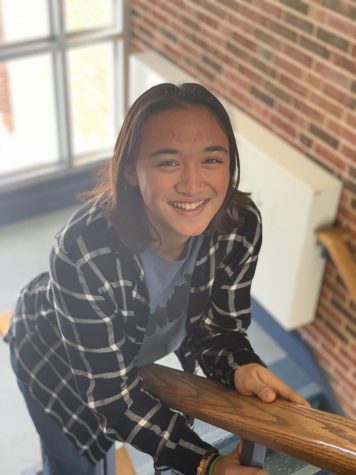
Hey y'all, I'm Hannah Sales also known as Peg Leg. If you need to find me I'm probably on soccer field, or I'm on the bench injured. There's also a possibility...

